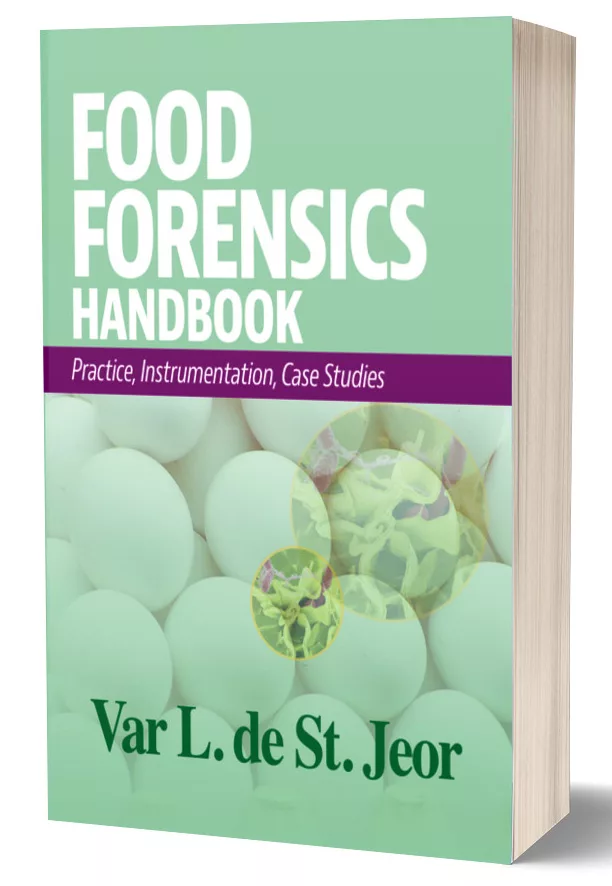Rising Recall Rates: A Strategic and Tactical Approach to Prevention
Company culture and leadership are critical for effective recall prevention and efficient operations

Image credit: SeventyFour/iStock/Getty Images Plus via Getty Images
As of mid-July 2024, product recalls are on track to exceed last year's numbers by an estimated 25 percent. This surge includes many reputable companies known for their robust systems, advanced technology, and sufficient resources. Why, then, are these companies experiencing such a significant increase in recalls?
Understanding the primary reasons for recalls is not just crucial; it is imperative. Approximately half of these incidents are attributed to undeclared allergens or mislabeling, with bacterial and foreign material contamination following closely. A comprehensive understanding of the reasons why recalls happen is the foundation on which effective preventative measures can be built.
Recall prevention demands more than just a comprehensive approach. It requires a dynamic, evolving strategy. Organizations must evaluate several key areas, including robust operational and quality programs, clear standard operating procedures (SOPs), and comprehensive training programs. While these measures are fundamental, the rise in recalls suggests that a more comprehensive, adaptive approach is needed. Most facilities adhere to Global Food Safety Initiative (GFSI) standards, yet recalls continue to rise, indicating the need for a more holistic, forward-thinking strategy.
To address this problem, we must look further upstream, starting with organizational culture and leadership. These are central to maintaining a strong commitment to food safety while moving the company forward from a growth perspective.
We must consider strategic and tactical approaches for effective recall prevention and efficient operations. Strategically, two main components are critical: the company's culture and its leadership. From the perspectives of recall prevention and food safety, these elements must be completely aligned to achieve optimal results.
Strategic Approach
Food safety is critical in the food and beverage industry, and those with a shared vision for quality and operations outperform those focused on a single component. Ensuring that products are safe for consumption protects consumers and preserves the company's reputation and financial stability. For the company to have a foundation of food safety, it must be based on unwavering values and a commitment to continuous, collaborative improvement and open and transparent communication. It must also hold people accountable while empowering them.
These core components are outlined below:
- Shared values and beliefs: A strong company culture aligns everyone around shared values and beliefs, making food safety a collective responsibility. When employees at all levels understand and embrace the importance of food safety, they are more likely to adhere to protocols and take initiative in identifying potential issues.
- Commitment to continuous, collaborative improvement: Cultures that prioritize continuous improvement are critical in food safety. They encourage ongoing education, training, and the adoption of best practices. This mindset ensures that the company stays ahead of emerging food safety risks and regulatory changes. Equally important is for the continuous improvement to be multi-disciplined, with an open, collaborative approach for maximum effectiveness.
- Open and transparent communication: An open communication culture enables employees to report food safety and quality concerns without fear of retribution. This transparency is crucial for timely identification and mitigation of potential hazards.
- Accountability and empowerment: A culture of accountability ensures that all employees, from the production floor to executive leadership, understand their role in maintaining food safety standards. Empowering employees to take ownership of food safety practices fosters a proactive approach to risk management.
The leadership component is critical to guide the organization and its people and ensure complete alignment with the culture:
- Setting the tone from the top: Leadership's commitment to food safety sets the tone for the entire organization. When executives prioritize food safety, allocate resources, and integrate them into the company's strategic objectives, this underscores the importance of these objectives to all employees.
- Visible commitment: Leadership involvement and active participation in food safety meetings, audits, and training sessions demonstrate a commitment to food safety.
- Policy and procedure implementation: Effective leaders establish clear, comprehensive food safety expectations and translate them into effective policies and procedures. They ensure these guidelines are communicated, understood, and followed consistently across all operations.
- Resource allocation: Leaders must allocate sufficient resources, including for capital, increased budgets for advanced food safety technologies, training programs, and hiring specialized personnel. Adequate investment in food safety demonstrates a tangible commitment to protecting consumers and the brand.
- Crisis management and response: Strong leadership is critical during a food safety crisis. Leaders must act swiftly and transparently, communicating clearly with stakeholders and taking decisive actions to address and resolve issues. This mitigates the immediate impact and rebuilds trust in the long term.
- Fostering a food safety-first mindset: Leaders must champion a safety-first mindset by leading by example. Regularly engaging with employees on the ground, understanding their challenges, and acknowledging their contributions to food safety creates a unified, safety-conscious workforce.
A robust company culture and proactive leadership create a synergistic effect, reinforcing the commitment to food safety at all levels. A culture that values food safety combined with leadership that prioritizes and invests in it ensures a resilient and effective food safety system.
Looking for quick answers on food safety topics?
Try Ask FSM, our new smart AI search tool.
Ask FSM →
Tactical Approach
Ensuring food safety is not just the responsibility of a single department, but a collaborative effort that spans various functions within an organization. The synergy between Operations and Quality Assurance is vital for maintaining high food safety standards. Here are some helpful areas for the organization to reinforce the collaboration:
- Holistic approach to food safety: Food safety issues can arise at any stage of the production process. By working together, Operations and Quality Assurance can ensure a comprehensive approach to identifying and mitigating risks throughout the supply chain.
- Consistency and standardization: Collaboration helps standardize the processes, ensuring that food safety practices are consistently applied across all operational activities. This reduces variability and enhances control over food safety parameters.
- Enhanced problem-solving: The Operations and Quality Assurance teams bring different perspectives and expertise to the table. By working together, they can more effectively troubleshoot problems, identify root causes, and implement practical and effective solutions.
Key Collaborative Efforts
Collaboration between Operations and Quality Assurance involves integrating efforts across various aspects of food safety management. This partnership ensures that both departments work together seamlessly to develop procedures, conduct training, perform audits, and respond to incidents. The following collaborative efforts highlight the areas where their combined expertise is most critical:
-
Integrated Food Safety Management Systems
- Joint development of procedures: Operations and Quality Assurance work together to develop standard operating procedures (SOPs) that incorporate best practices from both areas.
- Shared responsibility for HACCP: Both departments collaborate in hazard analysis, identifying critical control points (CCPs) and establishing monitoring procedures and acceptable operating ranges.
-
Cross-functional departmental training programs
- Unified training initiatives: Operations and Quality Assurance jointly design and conduct training programs to ensure that all employees understand the importance of food safety and are equipped with the necessary skills.
- Continuous education: Regular training sessions keep both departments updated on the latest food safety regulations, technologies, and methodologies. Most importantly, when companies explain the "Why" behind the regulations, it helps solidify understanding.
-
Joint audits and inspections
- Collaborative audits: Conducting joint internal audits helps ensure that food safety practices are thoroughly evaluated and that operational efficiency and quality standards are met.
- Inspection readiness: By preparing together for third-party audits, Operations and Quality Assurance can ensure that the company is always ready for inspections and is compliant with regulatory requirements.
-
Real-time monitoring and feedback
- Shared data systems: Implementing integrated data systems allows for real-time information sharing between Operations and Quality Assurance, facilitating prompt responses to potential issues.
- Feedback loops: Establishing feedback loops helps Quality Assurance provide continuous feedback to Operations on areas for improvement and vice versa.
-
Incident response and recall management
- Crisis management teams: Forming cross-functional teams that include members from both Operations and Quality Assurance to handle food safety incidents ensures a coordinated and effective response.
- Recall execution: Collaboration in recall procedures ensures swift action to remove potentially hazardous products from the market, minimizing consumer risk and protecting the brand.
-
Continuous improvement programs
- Joint improvement initiatives: Both departments work together on continuous improvement projects to enhance food safety protocols and operational efficiencies.
- Benchmarking and best practices: Sharing insights and best practices from both domains helps benchmark and drive continuous improvement in food safety standards.
-
Employee recognition
- Awards and incentives: Implementing formal recognition programs rewards employees for exceptional contributions to food safety.
- Public acknowledgment: Highlighting employees' achievements in company meetings, newsletters, bulletin boards, and personalized letters allows executive leadership to acknowledge employees' efforts.
Benefits of Collaboration
Collaboration, combined with active leadership engagement, brings numerous benefits to food safety management. This partnership not only enhances accountability and communication, but also drives continuous improvement and ensures higher compliance. Some of the benefits include:
- Increased accountability: Collaborative efforts ensure that both departments hold each other accountable for maintaining food safety standards, leading to a culture of shared responsibility.
- Improved communication: Regular interactions and joint efforts foster better communication and understanding between Operations and Quality Assurance, reducing silos and enhancing teamwork.
- Higher compliance and quality: Combined expertise and resources result in higher compliance with food safety regulations and improved overall product quality.
- Reduced risk and enhanced safety: By addressing potential risks from multiple angles and implementing comprehensive food safety measures, the collaboration significantly reduces the risk of food safety incidents.
Specific Company-Wide Initiatives
At a more granular level, implementing an effective food safety program requires a tactical approach that covers multiple aspects of the food production process and supply chain. While organizations may differ in their approach, some key tactical components and programs to consider include:
- Hazard Analysis and Critical Control Points (HACCP)
- Good Manufacturing Practices (GMPs)
- SOPs with clear operating ranges
- Food Safety Management System
- Training and education system for effectiveness
- Traceability and recall programs
- Comprehensive audits and inspections with action plans
- Robust root cause analysis (RCA)
- Corrective and preventive actions (CAPA)
- Allergen, microbiological, and foreign material prevention programs
- Complete sanitation and pest management programs
- Change management program
- Escalation procedures
- Capital planning and management for food safety.
Conclusion
In conclusion, the essence of food safety begins with a combination of the company's culture and leadership. These elements are interdependent, each amplifying the effectiveness of the other. For businesses in the food and beverage industry to protect consumers, fostering a culture of food safety and strong, visionary leadership is not only a requirement, but also a strategic imperative for long-term success.
Additionally, the collaboration between Operations and Quality Assurance is essential for achieving and maintaining high food safety standards. This partnership leverages the strengths of both departments to create a robust food safety culture, ensuring that products are safe for consumers and that the company's reputation remains intact.
Robert (Bob) Manning, M.B.A., M.S., M.E.M., has worked in the food and beverage industry for over 30 years in various facility and senior corporate positions. He is Founder and Principal Consultant at Manning Resource LLC, and previously worked as an EVP and CEO at Liquid. He has spent most of his time in operations and quality roles for large companies such as HP Hood LLC, Campbell's Soup, and Niagara Bottling, as well as consulting for major domestic and international firms. He is also the author of In the Midst of a Recall: Recall Management and Prevention Strategies in Real World Scenarios, which walks the reader through what actually happens in a major product recall. Bob holds a B.S. degree in Biology from Salem State University, an M.B.A. and a master's degree in engineering management from Western New England University, and a master's degree in food safety from Michigan State University. He is currently pursuing a master's degree in strategic management and executive leadership at Pennsylvania State University.









